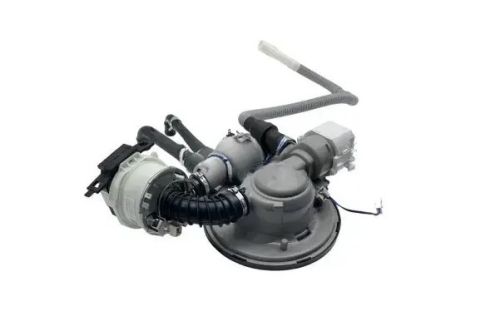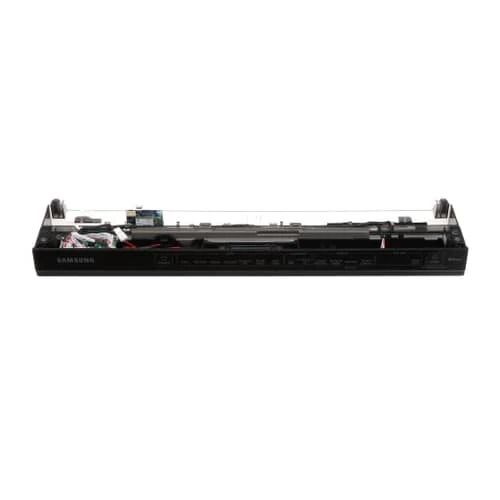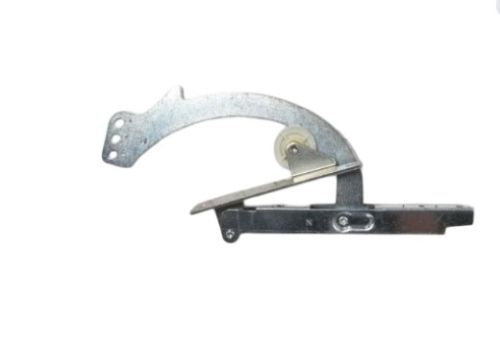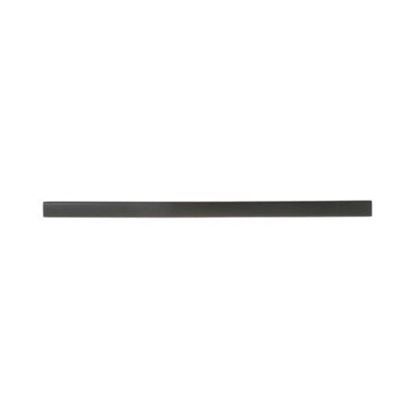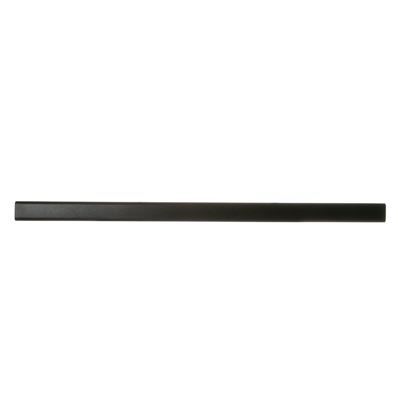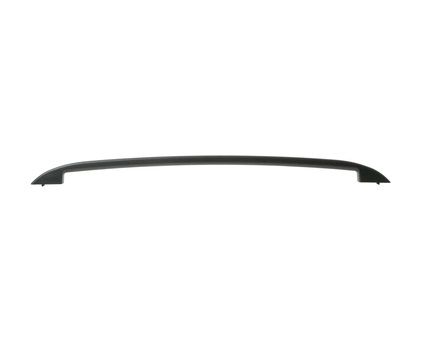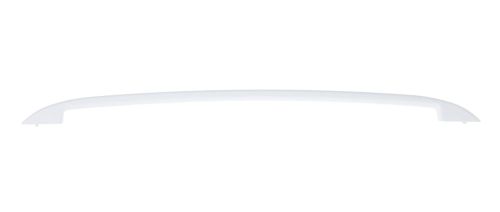
How to Clean a Dryer: 9 Easy Steps
Dryer cleaning is a simple process and may not be high on everyone's priority list, but it is an essential task that should not be overlooked. Regular maintenance and cleaning of dryers are crucial for several reasons. Not only does it enhance the efficiency and longevity of the appliance, but it also reduces the risk of fire hazards and improves air quality. Regular dryer cleaning removes the accumulated lint & debris, helps in faster drying, reduces utility bills, and can avoid costly repairs.
|
Table Of Content: |
What happens if you don't clean your dryer?
If you neglect to clean your dryer regularly, several potential issues can arise. Here are some of the consequences that can occur if you don't clean your dryer:
- Increased fire hazard: The accumulation of lint, dust, and debris within the dryer, particularly in the lint trap, exhaust vent, and dryer duct, creates a highly flammable environment. If left unchecked, this buildup can ignite and result in a dryer fire. Lint is highly combustible, and a neglected dryer with excessive lint poses a significant fire risk to your home and safety.
- Reduced Efficiency and Longer Drying Times: Over time, lint and debris can clog the dryer vents and restrict airflow. When the dryer's airflow is impeded, it hampers the drying process. As a result, clothes take longer to dry, and the appliance has to work harder and consume more energy to achieve the desired results. Neglecting dryer cleaning can lead to increased energy consumption, higher utility bills, and frustration due to extended drying times.
- Decreased Appliance Lifespan: When a dryer isn't cleaned regularly, lint and debris can accumulate in critical components such as the motor, heating element, and drum. This buildup puts additional strain on these parts, causing them to work harder and potentially malfunction or wear out prematurely and affecting the lifespan of a dryer.
- Poor Air Quality: A dirty dryer with clogged vents can release lint, dust, and allergens into the air within your home. These particles can circulate throughout the living space, compromising indoor air quality. This can be particularly problematic for individuals with respiratory issues or allergies, as it may trigger or worsen their symptoms.
- Increased Risk of Carbon Monoxide Poisoning (Gas Dryers): If you have a gas dryer, neglecting its cleaning and maintenance can pose additional risks. A clogged vent or exhaust system can cause carbon monoxide, a colorless and odorless gas, to accumulate and seep back into your home. It can cause severe health issues.
Cleaning a dryer regularly or periodically is very important and essential to avoid the major risks and problems that are mentioned above.
How often do you need to clean your dryer?
The frequency of cleaning a dryer depends on several factors, including usage patterns, the type of dryer, lint accumulation, and specific recommendations from the manufacturer. Most manufacturers recommend cleaning your dryer at least twice a year.
Always consult your dryer’s user manual provided by the manufacturer, where you may find specific recommendations for cleaning a dryer. They may provide detailed guidelines based on the model and type of dryer you own.
What Is the best way to clean a dryer?
The best way to clean a dryer is by using a solution made with warm water and white vinegar or a mild detergent mixture. This simple DIY is the best way to clean a dryer. Here are the steps involved in this process of cleaning:
- Remove the lint from the lint trap and clean it with the help of a soft brush.
- Clean the dryer vent and exhaust using a lint brush or vacuum cleaner.
- Clean the dryer ducts with a brush or vacuum cleaner
- Apply the cleaning solution that you have made and wipe the dryer exterior surfaces with a damp cloth.
- Clean the dryer drum with the same solution by running an empty cycle with hot water.
How to clean the inside of a dryer?
A dryer needs to be cleaned regularly to maintain perfect work efficiency. As the dryer performs operation inside a drum, cleaning inside of the dryer is essential. Most of the dryer parts will also be present on the inside of a dryer. Hence, dryer cleaning is necessary.
Here are the 9 easy steps to clean a dryer:
- Turn off the power source first
Disconnect the power source to the dryer for safety. This prevents any accidental operations. - Clean the lint trap
Remove the lint trap or lint screen. Clean the lint, debris, or any other dust that has buildup by using a soft brush or vacuum cleaner attachment. A clean lint trap provides better performance and airflow. - Vacuum the Interior
Use a vacuum cleaner with a narrow attachment or a long brush to remove lint and debris from the dryer's interior, including the lint trap housing and the exhaust vent. - Access the vent duct
Remove the dryer to access the vent duct. Disconnect the dryer from the exhaust vent and check for any dust or debris between them. - Clean the vent
Inspect the duct for any accumulated lint or obstructions. Use a vent cleaning brush to remove the lint buildup or you can also use a vacuum cleaner. You may need to access the vent duct from both ends (inside the dryer and outside the house) for a thorough cleaning. - Clean the dryer drum
Clean the dryer drum by using a mild detergent solution or a specific dryer cleaner. You can also use baking soda to remove the tough stains inside the drum. Remember to thoroughly dry the drum before using the dryer. - Run an empty cycle
Run an empty cycle with hot water to remove any excess dust from the dryer. - Wipe down the complete interior
Clean the inside of the dryer by wiping it with a soft fabric. Use a mild detergent to completely wipe the interior and after wiping with the detergent use warm water and clean the entire dryer again to remove the detergent or soap stains. Remember to use only soft fabric or a sponge to wipe the dryer. - Plugin the power source
Plug in the dryer and run it on a no-heat cycle for a few minutes to test its functionality.
Always conduct regular maintenance to avoid any malfunctions and to obtain the perfect output of the appliance. Along with the interior, you should also clean the parts of a dryer to increase your product’s efficiency, performance, and lifespan.
How do you clean the outside of a dryer?
Cleaning the outside of a dryer is a relatively simple task. Here we have mentioned some steps on how to clean the outside of a dryer:
- Remove the power source
Ensure that your dryer is disconnected from the power source to avoid any accidents and maintain safety. - Remove dust and debris
Use a dry cloth or sponge to wipe away any loose dust or debris from the exterior surfaces of the dryer. Pay attention to the top, sides, and front of the machine. - Prepare a cleaning solution
By using a mixture of mild detergent or soap with warm water, prepare a cleaning solution that is not hard. You can use a dryer cleaner instead based on your choice. - Clean the surfaces
By using the solution made, wipe the exterior surfaces of the dryer with a cloth. Check for any stains, fingerprints, or grime, and clean them gently. - Rinse with clean water
After cleaning with the cleaner or solution made, take a cloth rinsed in clean water and wipe any soapy residues. - Dry the dryer
Take a dry towel and wipe down the exterior of the dryer to remove any remaining moisture. Ensure that the dryer is completely dry before plugging it back in. - Clean control panels
If your dryer has control panels or knobs, use a damp cloth to gently wipe them down. Be cautious not to get excessive moisture around the control panels, as it could damage the electrical components. - Reconnect the power
Once the dryer is dry and all surfaces are clean, plug it back into the power source.
How to clean a dryer drum?
Cleaning the drum of a dryer is important to remove lint, debris, and any built-up residue that can affect its performance. Here's a step-by-step guide on how to clean a dryer drum:
- Unplug the dryer
Remove the power connection to the dryer for safety purposes. - Remove lint from the lint trap
Start by cleaning the lint trap or filter located inside the dryer door. Remove any lint buildup by hand or use a soft brush. This step helps improve the dryer's efficiency. - Vacuum the drum
Attach the hose attachment to your vacuum cleaner. Open the dryer door and carefully vacuum the inside of the drum, removing any loose lint, debris, or dust. Pay attention to the drum's edges, corners, and crevices. - Get a cleaner or prepare a solution
Buy a specific dryer cleaner from the stores or prepare a cleaning solution on your own with a simple DIY. Make a mixture of mild detergent with warm water and use it as a cleaner. - Dampen a cloth or sponge
Dampen a soft cloth or sponge with the soapy water mixture, making sure it is not dripping wet. - Wipe down the drum
Gently wipe the interior of the drum with a damp cloth or sponge. Focus on removing any stains, residues, or sticky substances. - Run a cycle with a cleaner or cleaning solution
Fill the drum with hot water and add a dryer cleaner or a mixture of white vinegar or baking soda in warm water. Run an empty cycle to clean the lint, debris, or residues neatly. - Run an empty cycle again with only water
Run a hot water cycle again without adding any cleaners. This helps to clean the soapy residues that may have formed in the previous cycle. - Wipe down with a dry cloth
Wipe the entire drum and surfaces with a dry cloth or sponge until the drum is completely dried. - Ensure that the drum is dry and turn on the power
Before turning on the power source ensure that your drum is completely dry and there should be no stains of residues or wet surfaces.
These are the basic steps to clean your drum. Regularly cleaning a dryer drum helps maintain its efficiency, prevents lint buildup, and ensures optimal performance.
Frequently Asked Questions
How do I get the smell out of my dryer?
To get rid of the smell in your dryer, follow these simple steps:
- Clean the lint trap: Remove the lint trap from your dryer and clean out any lint or debris that may be causing the odor.
- Clean the interior surfaces: Clean the inside of a dryer with a damp cloth dipped in soapy water. Remove any visible residues and stains.
- Check for hidden items: Sometimes, small items like socks or tissues can get stuck in the dryer drum. Check and remove them.
- Ventilate the area: Ensure that the place where a dryer is located is well-ventilated or not.
- Run a cycle with vinegar: Place a cup of white vinegar on a dishcloth or in a small dish, and run a full cycle on the hottest setting. Vinegar helps eliminate odors.
- Keep the door open: Leave the dryer door open for a few hours to allow fresh air to circulate and remove any remaining smells.
Vinegar works effectively to remove any odors.
Why does my dryer smell bad after drying?
There are several reasons why your dryer may smell bad after drying clothes:
- The Buildup of lint or debris on the lint trap, exhaust vent, and drum can cause such a smell. When lint mixes with moisture, it can create a musty smell.
- Leaving damp clothes in the dryer for a long period of time can develop a foul odor.
- Spills or residue from items like fabric softeners or dryer sheets can accumulate on the drum or other components of the dryer, resulting in a bad smell.
- A clogged or partially blocked exhaust vent restricts airflow, leading to moisture buildup and unpleasant odors.
- In some cases, bacteria or fungus can grow in damp areas of the dryer, especially if it's not adequately cleaned or maintained.
How do you deodorize a dryer with baking soda?
To deodorize a dryer with baking soda, follow these steps:
- Make a mixture of baking soda with warm water.
- Apply this baking soda paste on the interior drum surface, focusing on odor-prone areas.
- Let the paste sit for 15-30 minutes to absorb and neutralize odors.
- Wipe away the baking soda paste with a damp cloth or sponge.
Using baking soda to deodorize your dryer is an easy and effective method to eliminate unwanted odors.


